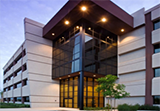Here at Palo Verde Cancer Specialists, our cancer center believes that everyone deserves a happy and healthy life – no matter what condition that a person may be facing. As your providers of cancer treatment in Glendale and Payson, our oncology specialists aim to treat cancer with our selection of convenient and comprehensive services. While we specialize in cancer treatment, we also assist with a number of other conditions as well. One of these conditions that we’re able to help treat is an arteriovenous malformation (also referred to as an AVM).
What Are Arteriovenous Malformations?
Arteriovenous malformations are irregular connections between the arteries and the veins. Although they can form anywhere inside the body, these are most commonly found in the brain and the spinal cord. Unfortunately, this is also where arteriovenous malformations are the most severe. It’s not entirely known what causes them to form, but evidence indicates that genetic factors play a large role in the likelihood of developing one.
Arteriovenous malformations disrupt the body’s venous system, which is used to bring oxygen from the lungs to the tissues. Regularly, oxygenated blood travels through arteries to the tissues of the body. The oxygen is distributed through a series of capillaries, which are essentially microscopic blood vessels. After the blood passes through the capillaries, it’ll travel through the veins and back into the lungs where it’s reoxygenated and the cycle repeats again.
In an arteriovenous malformation, a connection forms directly between an artery and a vein, which bypasses the network of capillaries. This prevents oxygen from getting to the tissues and can end up damaging nerve cells and other cells in the area. While arteriovenous malformations often start small and show little effects, they often increase in size over time, eventually leading to serious problems.
Symptoms of Arteriovenous Malformations
Symptoms of arteriovenous malformations can vary dramatically. They depend on both the location and the size of the arteriovenous malformation. If they occur outside of the brain or spinal cord, the symptoms may be so mild that they’re undetectable. However, when they occur within the brain or the spinal cord, a patient may experience a variety of symptoms that can even become life-threatening. These include the following:
- Weakness or paralysis of part of the body
- Loss of coordination and difficulty walking
- Trouble with planning and thinking
- Dizziness
- Partial loss of vision or an inability to control the movement of the eyes
- Difficulty speaking or understanding language
- Numbness, tingling, or other similar sensations
- Memory loss
- Confusion or dementia
- Disorders in behavior or learning for children who develop them
Neurological Arteriovenous Malformations
Neurological arteriovenous malformations are those that form in the brain or spinal cord. They may form anywhere in these areas where blood vessels exist. When they form, they can end up damaging these organs by depriving areas of oxygen, hemorrhaging into nearby tissues, or putting pressure on areas of the brain or spinal cord. The symptoms that a person will experience from neurological arteriovenous malformations will depend on the size and the location of it.
When they form in the spinal cord, they can cause severe and sudden attacks of back pain, which is comparable to the effects one might feel from a slipped disk. Arteriovenous malformations in the spinal cord can also cause strange sensations or even paralysis in parts of the body, depending on where they form. If the spinal cord is deprived of blood, it can cause nerve cells in the spinal cord to die, which can develop into paralysis.
Arteriovenous malformations in the brain can disrupt thought, speech, language, touch, hearing, taste, sight, or voluntary motion when they form in the cerebral hemispheres on the outside of the brain. When they form deeper in the cerebrum, they can compromise coordination, memory, and learning.
Arteriovenous malformations that form in the brainstem or hindbrain can disrupt even more vital functions. They can impair balance, fine motor movements, and even cause problems with the heart and lungs. Deep arteriovenous malformations can cause dizziness, vomiting, tremors, or an inability to perform coordinated movements.
How Dangerous Are Arteriovenous Malformations?
Typically, the most dangerous aspect of an arteriovenous malformation is the possibility of hemorrhage. While most arteriovenous malformation hemorrhages aren’t severe enough to be immediately noticeable, major bleeding episodes can be fatal. There are several different factors that influence the danger of an arteriovenous malformation hemorrhaging:
- Deeply-situated arteriovenous malformations or those in an area with little drainage are more likely to bleed.
- Larger ones are often less likely to bleed than smaller ones.
- An arteriovenous malformation that has hemorrhaged in the past year is about nine times as likely to bleed when compared to one that never has.
- Pregnancy increases the likelihood of a hemorrhage due to the fluctuations in blood pressure and volume that it causes.
- Deep arteriovenous malformations are more likely to cause serious neurological damage than those that are in the outermost regions of the brain or cranial cavity.
Make Your Appointment For Cancer Treatment Today!
Please reach out to Palo Verde Cancer Specialists today to explore your treatment options. We understand the challenges you’re facing, and we’re here to provide compassionate support and guidance. With five convenient locations throughout the valley, we’re dedicated to helping you every step of the way.

GLENDALE
5601 W. Eugie Ave.
Suite 106
Glendale, AZ 85304
602-978-6255
Review Us ☆

SCOTTSDALE
7373 N. Scottsdale Rd.
Suite E-100
Scottsdale, AZ 85253
480-941-1211
Review Us ☆

ESTRELLA
9250 W. Thomas Rd.
Suite 150
Phoenix, AZ 85037
623-478-8091
Review Us ☆

WEST VALLEY
7410 N Zanjero Blvd.
Glendale, AZ 85305
602-375-6230
Review Us ☆

EAST VALLEY
1488 W. Elliot Rd.
Gilbert, AZ 85233
480-941-1211
Review Us ☆





